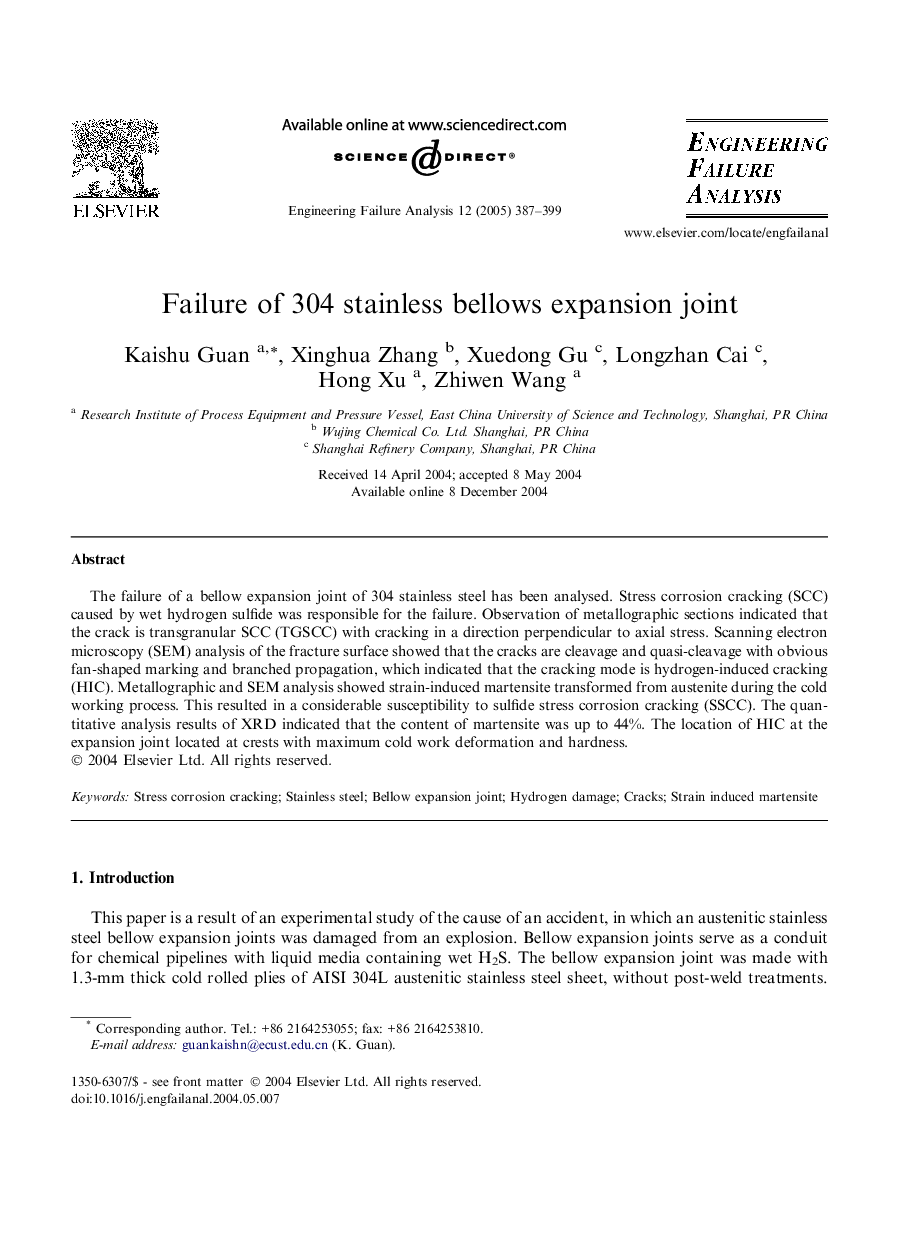| Article ID | Journal | Published Year | Pages | File Type |
|---|---|---|---|---|
| 10415325 | Engineering Failure Analysis | 2005 | 13 Pages |
Abstract
The failure of a bellow expansion joint of 304 stainless steel has been analysed. Stress corrosion cracking (SCC) caused by wet hydrogen sulfide was responsible for the failure. Observation of metallographic sections indicated that the crack is transgranular SCC (TGSCC) with cracking in a direction perpendicular to axial stress. Scanning electron microscopy (SEM) analysis of the fracture surface showed that the cracks are cleavage and quasi-cleavage with obvious fan-shaped marking and branched propagation, which indicated that the cracking mode is hydrogen-induced cracking (HIC). Metallographic and SEM analysis showed strain-induced martensite transformed from austenite during the cold working process. This resulted in a considerable susceptibility to sulfide stress corrosion cracking (SSCC). The quantitative analysis results of XRD indicated that the content of martensite was up to 44%. The location of HIC at the expansion joint located at crests with maximum cold work deformation and hardness.
Related Topics
Physical Sciences and Engineering
Engineering
Industrial and Manufacturing Engineering
Authors
Kaishu Guan, Xinghua Zhang, Xuedong Gu, Longzhan Cai, Hong Xu, Zhiwen Wang,
